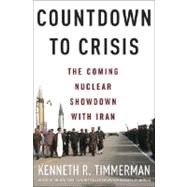
| Prologue: WHAT IF THE AYATOLLAH GOT THE BOMB? | 1 | (96) | |||
|
7 | (12) | |||
|
19 | (8) | |||
|
27 | (8) | |||
|
35 | (12) | |||
|
47 | (11) | |||
|
58 | (8) | |||
|
66 | (7) | |||
|
73 | (15) | |||
|
88 | (9) | |||
| 10 LIFTING THE STONE | 97 | (6) | |||
| 11 THE VISITORS | 103 | (16) | |||
| 12 LOOSE NUKES | 119 | (16) | |||
| 13 RED LIGHT, GREEN LIGHT | 135 | (17) | |||
| 14 THE PARTNERS | 152 | (14) | |||
| 15 THE PENETRATION | 166 | (17) | |||
| 16 THUNDER | 183 | (14) | |||
| 17 THE COUNTDOWN BEGINS | 197 | (11) | |||
| 18 THE PRESIDENT, THE LEADER, AND THE MURDERERS | 208 | (10) | |||
| 19 THE STUDENTS | 218 | (7) | |||
| 20 OCTOBER SURPRISE | 225 | (11) | |||
| 21 THE WARNINGS | 236 | (14) | |||
| 22 THE RAT LINE | 250 | (4) | |||
| 23 NUKES "R" US | 254 | (14) | |||
| 24 THE EVIDENCE | 268 | (13) | |||
| 25 SHOWDOWN | 281 | (19) | |||
| 26 THE WAY AHEAD | 300 | (15) | |||
| Epilogue: THE PRICE OF FAILURE | 315 | (4) | |||
| Appendix: THE EVIDENCE | 319 | (52) | |||
| Notes | 371 | (8) | |||
| Acknowledgments | 379 | (2) | |||
| Index | 381 |
The New copy of this book will include any supplemental materials advertised. Please check the title of the book to determine if it should include any access cards, study guides, lab manuals, CDs, etc.
The Used, Rental and eBook copies of this book are not guaranteed to include any supplemental materials. Typically, only the book itself is included. This is true even if the title states it includes any access cards, study guides, lab manuals, CDs, etc.
Excerpted from Countdown to Crisis: The Coming Nuclear Showdown with Iran by Kenneth R. Timmerman
All rights reserved by the original copyright owners. Excerpts are provided for display purposes only and may not be reproduced, reprinted or distributed without the written permission of the publisher.